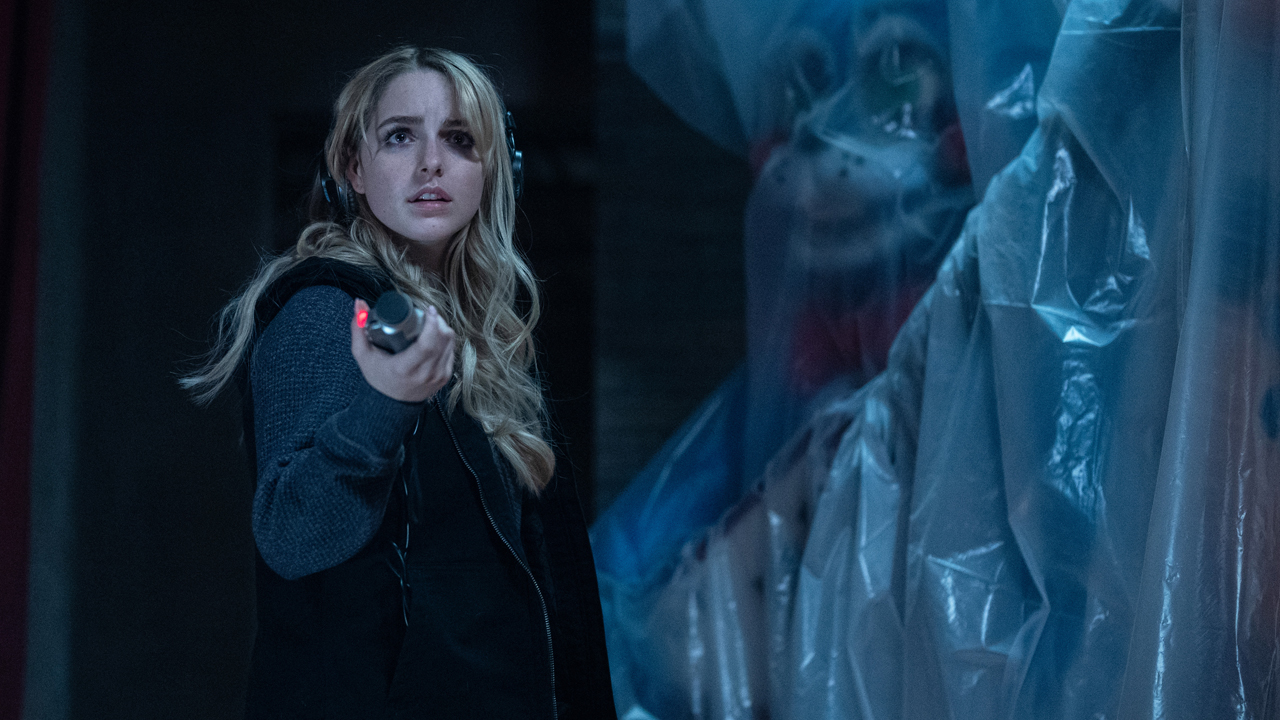To 3D Or Not To 3D: Buy The Right Tangled Ticket
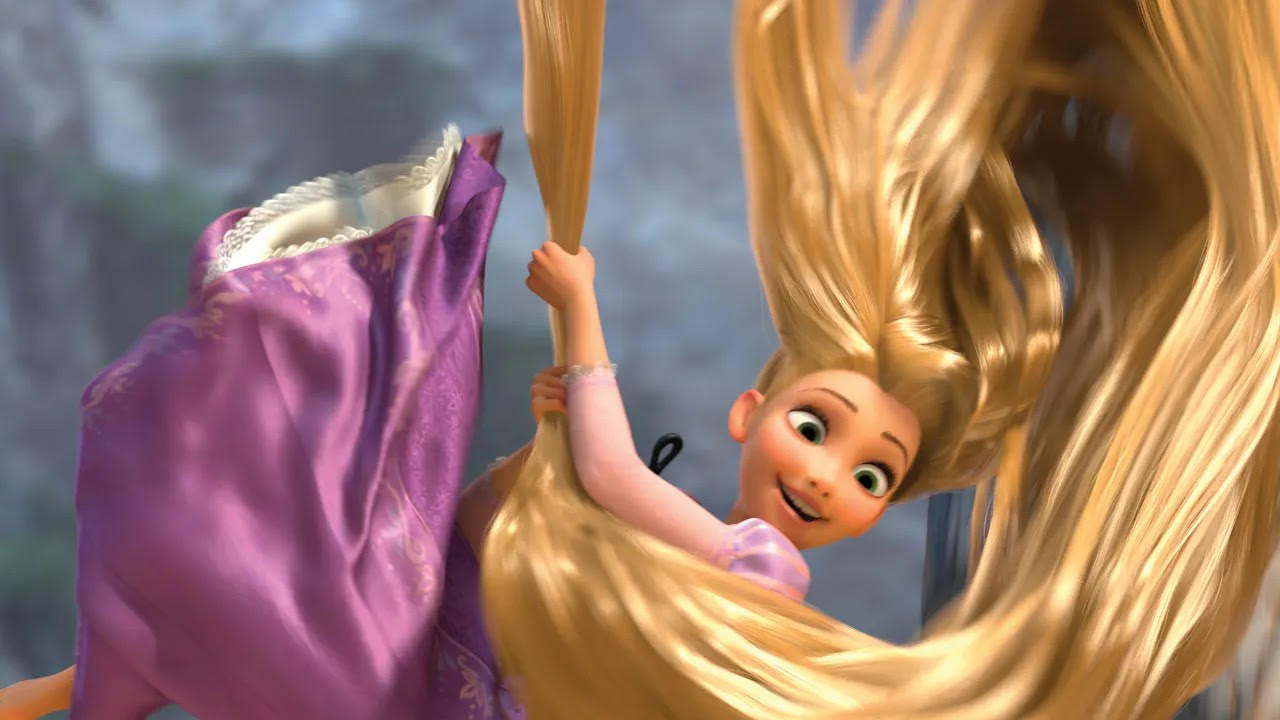
It's a given at this point that nearly every animated movie will be released in 3D, both because the animation studios jumped on the bandwagon earlier than nearly everybody else and because animated films simply tend to work better in the third dimension. Whatever the problem is about converting human faces into 3D isn't a factor in animation, which takes the opportunity to pop off the flat screen with bright colors, gimmicky tricks and rubbery faces that look particularly good even when you've got the glasses on.
And though Disney had done well releasing their Pixar films in 3D, Tangled marks the first time they're bringing one of their venerable fairy tale adaptations into the third dimension. Tangled is CGI animated like Pixar movies or Disney's recent Bolt, but it also deliberately mimics the flat effect of the old-school, hand-drawn films, combining the new technology with a more traditional film in a way that really, really works. I loved Tangled when I saw it in 2D in unfinished form, and I loved it again when I was the finished film projected in glorious 3D. But which was better? And when you actually have to pay the few extra bucks to see it in 3D, is it worth the investment? I am here to help, with our latest installment of the To 3D or Not To 3D series: Tangled edition.
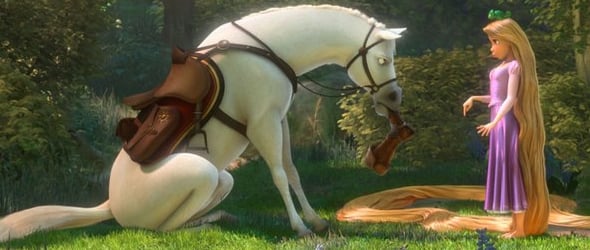
Does It Fit?
Animation is almost always a better choice for 3D than live-action films, but while Tangled is CGI animated, it's aiming for a more traditional, hand-drawn feel, meaning it's deliberately not quite as eye-popping as something like Toy Story 3. Then again, hand-drawn animation has been 3D in its own way for decades, showing different planes of action on totally separate animated cels. While Tangled may not be the most obvious pick for modern 3D, its old-school feel uses it in a different and maybe more interesting way.
3D Fit Score: 4/5
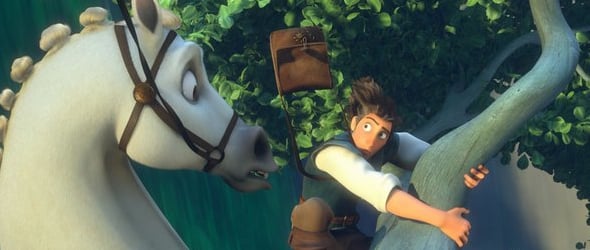
Advance Planning And Effort
DIsney has been making all of its animated films in 3D for several years now, so co-directors Nathan Greno and Byron Howard knew from the moment they signed on that 3D would be part of the process. When Eric sat down to interview them a few weeks ago, they explained that they worked with a 3D supervisor, Robert Newman, who insisted everything about the 3D be as perfect as possible: "He’s a sticker for absolutely the highest quality 3D you can get. There’s no conversion at all, every frame is rendered left and right eye so you get the most immersive experience that you can."At the same time they also made sure that the film would work in 2D as well, giving audiences the actual choice of which format they want to see it in. That kind of planning, which actually might cause the film to make less money but makes sure it works well forever and ever on DVD, is something you can't help but be impressed by.
Planning And Effort Score: 5/5
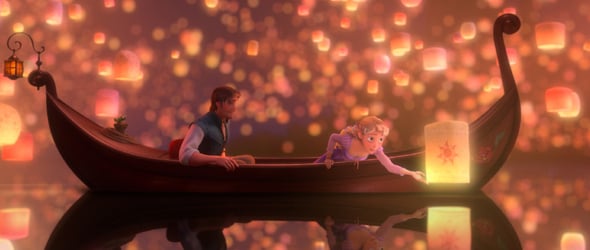
Beyond The Window
Your Daily Blend of Entertainment News
If you think of the movie screen as a window into the world of the films, the best 3D movies make everything beyond that window seem layered and rich, taking advantage of the technology to give an impression of boundless depth. That's the highlight of the 3D in Tangled, which uses the technology to send those separated planes of classical animation way off into the distance. It's not just the lush fairytale landscapes that take advantage of this, though, but also Tangled's many action scenes, which take advantage of the added 3D depth of field to make things more suspenseful and thrilling. Believe it or not, it even benefits the romance-- the inevitable climactic love song takes place surrounded by floating lanterns, which fill the screen and go on for what seems like miles.
Beyond The Window Score: 5/5
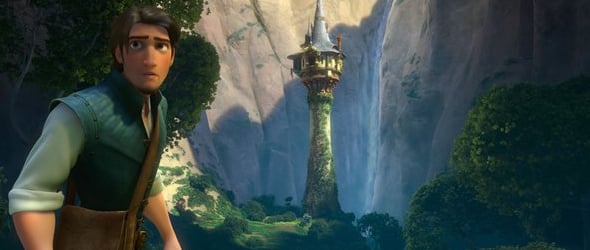
Before The Window
Since it's going for the deliberately storybook feel, Tangled doesn't really indulge in the "things flying over your head" gimmick at all, content to make the "]window of the screen a pretty impenetrable one. I had no problem with this, and thought the lack of 3D gimmickry fit well with Tangled's old-fashioned feel, but those of you who go into a 3D movie hoping to see birds flying over head or flames leaping out of the screen may be disappointed with what you paid for.
Before The Window Score: 1/5
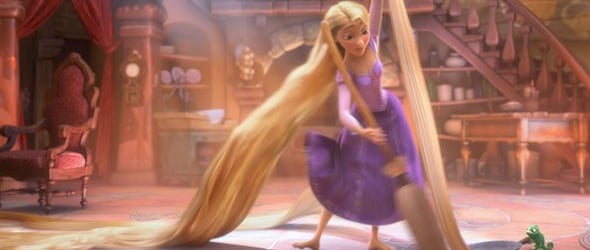
Brightness
Tangled is your typical animated movie packed with bright colors, wide-eyed characters and all the things that are beneficial for 3D movies, which have to be projected brightly to compensate for the dimming effect of 3D glasses themselves (they're basically sunglasses, y'know). Because the design seems to be so carefully constructed for maximum 3D brightness, I'm going to have to give the film the benefit of the doubt and assume my projection was off, because the whole thing was way too dark. It wasn't a problem in most of the daylight scenes, which were colorful and well-lit even with the 3D glasses on, but the nighttime scenes were sometimes difficult to make out. Again, the movie seems so carefully made-- and Disney has such a solid track record with 3D films-- that I'm assuming it was a projector problem. If the movie is too dark when you're watching it, though, feel free to march up to the projection booth and demand a brighter bulb-- 3D is a new technology and everyone is still learning how to use it well.
Brightness Score: 3/5
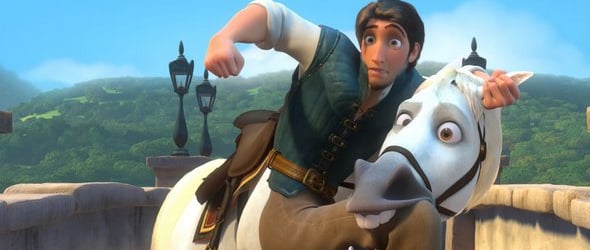
Audience Health
Motion sickness in 3D movies is usually a problem for live-action films, which move the camera too fast or cut between shots too quickly for the glasses-wearing audience to keep up. I've never had much of a problem with motion sickness in 3D (except for in Clash of the Titans, though I think that one made everyone sick for various reason), but Tangled seemed especially gentle on the eyes, probably because a large portion of the audience will be children. The movie isn't slow or stodgy, but the scenes move at a reasonable pace, and there's no fake shaky cam or weird zooming tricks that might throw you off in a 3D film. If you could handle Beauty and the Beast, you should have no problem with Tangled.
Health Score 5/5
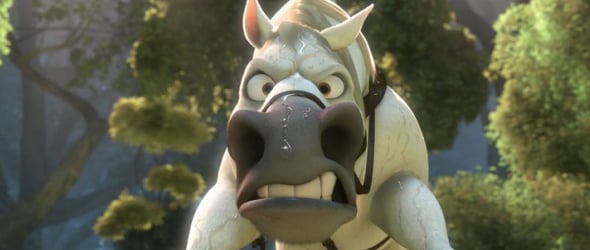
The Glasses Off Test
If you've ever taken your glasses off during a 3D movie-- whether from headaches, boredom, or genuine curiosity about what it looks like-- you will notice that some things in the frame look blurrier than the others, and when you put the glasses back on, those are the things that are "more 3D," for lack of a better term. The amount of blurriness indicates just how much actual 3D is going on here, rather than just putting one or two things in 3D to pop out at you and leaving the rest boring and flat, assuming you won't notice. The flat look is actually kind of what Tangled is going for, so there's a lot less blur effect going on than you might otherwise see. In some moments-- including some intimate two-person scenes, which usually get ignored for 3D effects-- you notice it in a nice and subtle way that's adding a depth to the frame that you might not have even noticed before. It's not like you could watch the movie in 3D without the glasses, but Tangled is more like the kind of pop-up book with one 3D thing on each page, rather than full pages that pop out all at once.
Glasses Off Score: 2/5
| SCORES RECAP | |
| 3D Fit | 4 |
| Planning and Effort | 5 |
| Beyond The Window | 5 |
| Before The Window | 1 |
| Brightness | 3 |
| Audience Health | 5 |
| The Glasses Off Test | 2 |
| Total Score | 25 (out of a possible 35) |
Final Verdict: A 25 out of 35 score doesn't exactly make Tangled a must-see in 3D, and it's a movie deliberately made to play well on DVD and Blu-Ray over and over again as kids grow up. But I enjoyed the extra depth that the 3D added, and felt immersed in the story in a different way, even when the film's deliberate old-school flatness got in the way of its 3D ambitions. Though it's a much better movie than Megamind, it doesn't take advantage of the 3D format nearly as well. But for the families who are likely to see this movie, it's probably a relief to hear both that they can save themselves the extra few bucks in 3D ticket prices, but if they're stuck with only 3D showings, they won't regret the decision Tangled is a movie worth seeing no matter what format you catch it in.
For more 3D analysis, visit our To 3D Or Not To 3D archive right here.
Staff Writer at CinemaBlend

